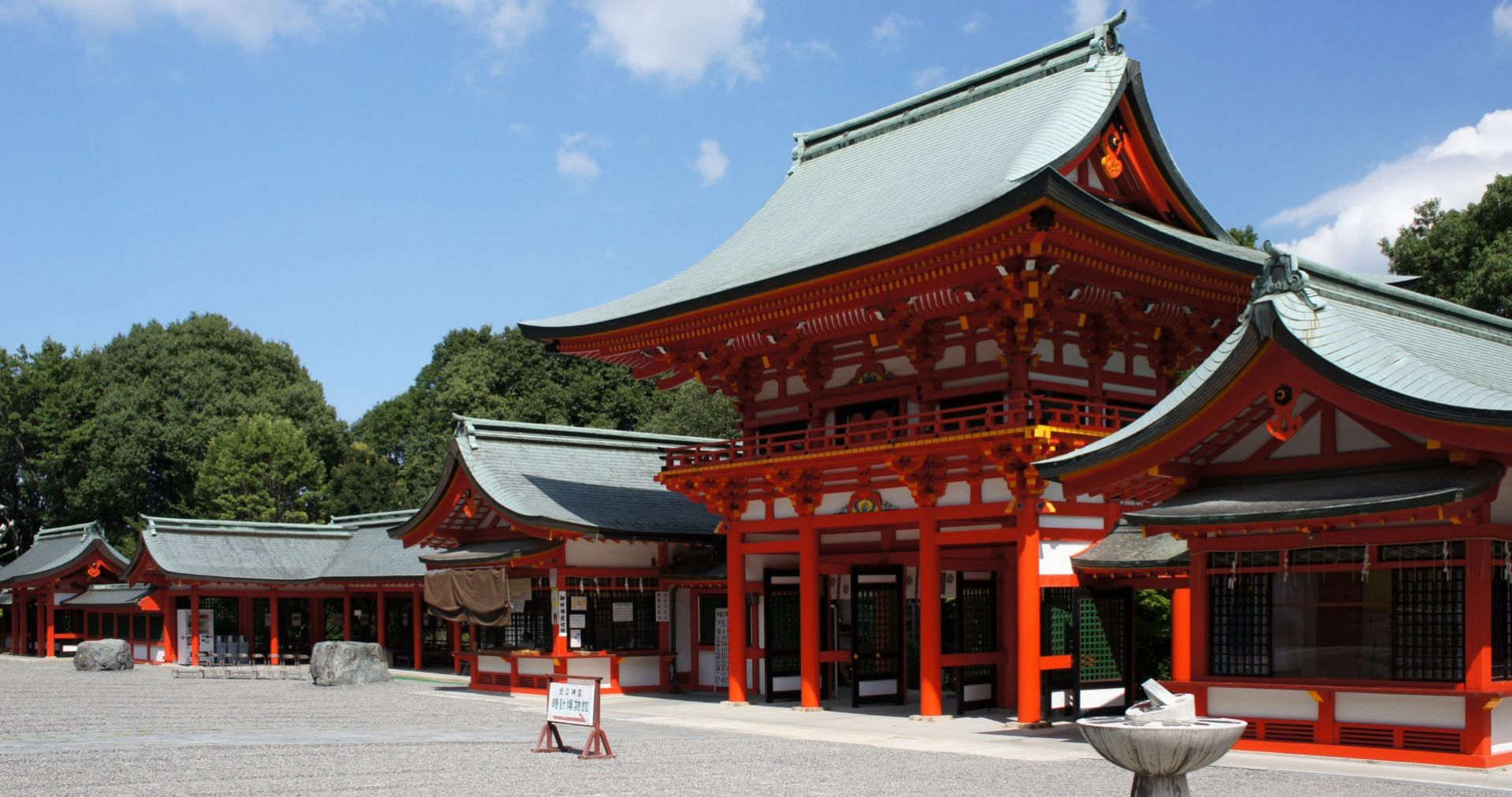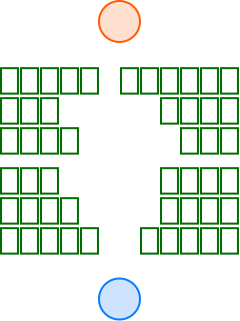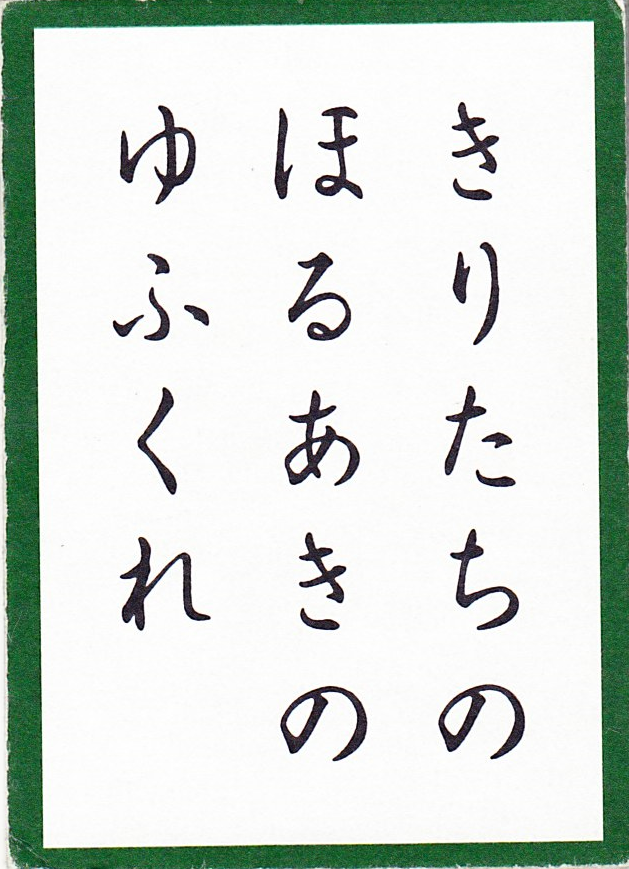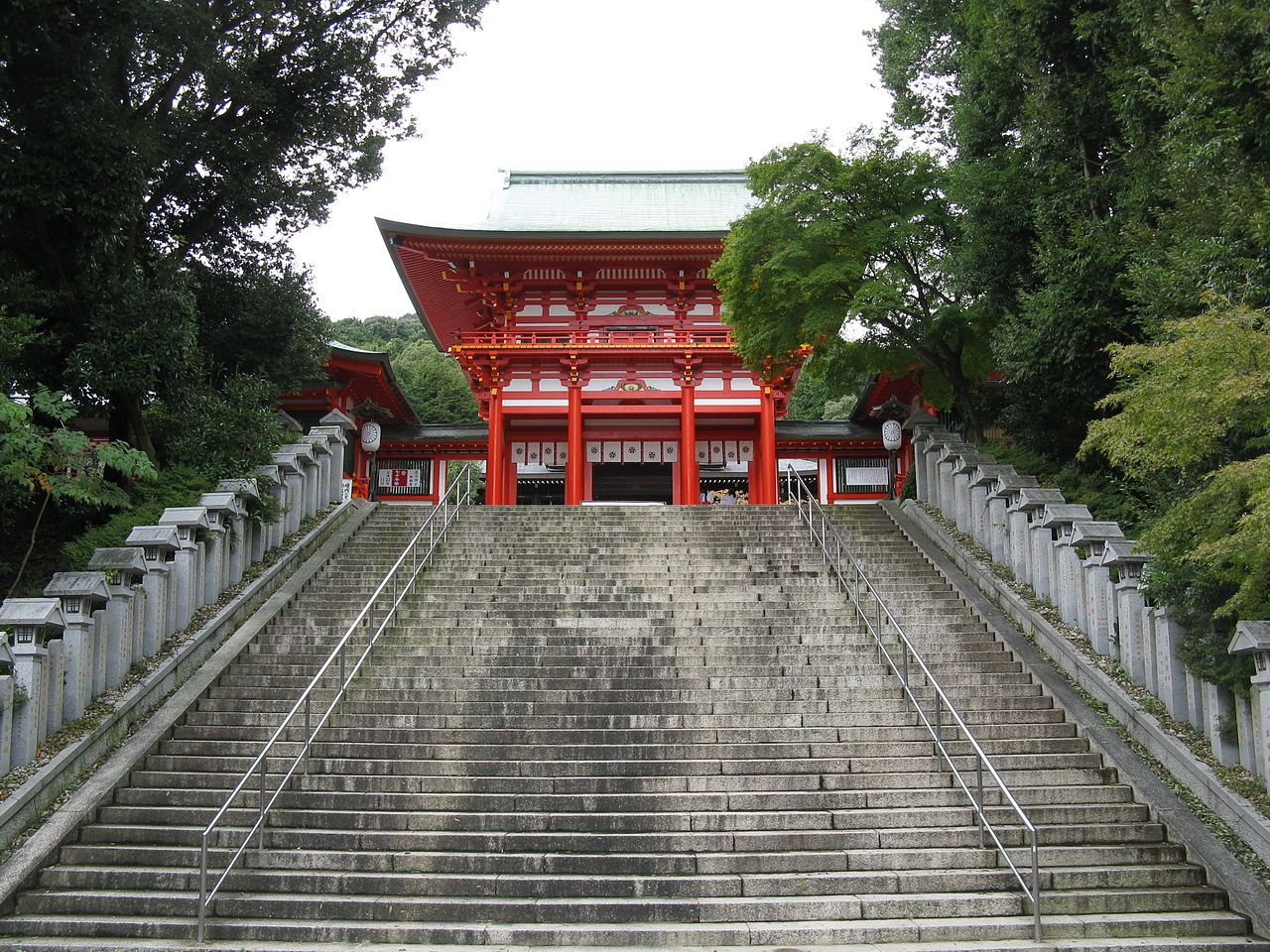
ちはやぶる
かみよもきかず
たつたがは
からくれなゐに
みずくくるとは
chihayaburu
kami yo mo kikazu
tatsuta gawa
karakurenai ni
mizu kukuru to wa
I was watching one of the early episodes in the anime Chihayafuru when I first heard this poem. On screen, two of the main characters sat in front of 30-50 cards neatly arranged into six horizontal lines. There was utter silence, a strange combination of serenity and anticipation. A stereo beside them began to beautifully recite the poem. In an instant, the peace burst into a flurry of action: each player rushed to swipe at one of the cards before the other. It was an aggressively beautiful, poetically competitive, adrenaline-charged scene. So much happened in less than a second, yet it simultaneously felt like an eternity of time had passed. In that weird nebulous of time, the game captured my heart.
Known as kyougi karuta (競技かるた, competetive karuta), it's a card game that combines memorization, athleticism, and reaction speed with traditional Japanese poetry. And little did I know, studying at JCMU placed me right at the heart of the karuta world.

The premise of the game is based around the Ogura Hyakunin Isshu, a classical Japanese poetry anthology consisting of 100 tanka written by 100 different authors. Each poem is converted into two types of cards: yomifuda (読札, reading cards) and torifuda (取札, taking cards). Yomifuda contain the full poems and are recited one-by-one. Torifuda contain only the second half of the poems and are used as karuta's playing cards.
The game plays like an extreme version of "concentration". Two opposing players place 25 torifuda each in front of them as their territories (50 cards in play total). From there, each of the 100 yomifuda will be read at random until there is a winner. The first player to touch the torifuda that corresponds with the recited yomifuda reduces their territory by one. If a player touches any card when the correct torifuda is not in play (since there are 100 possible yomifuda but only 50 torifuda in play), their opponent can send them a card from their territory. Whoever reduces their territory to zero first is the winner.
I dedicated myself to learning the sport after watching Chihayafuru. It just so fun and exhilerating! Plus, as the sport is for the most part played in Japan only, there was a certain part of me that found it exciting to play a game that very few in the U.S. could.
Just being able to play the game takes a lot of studying beforehand. You have to know which torifuda go with which poems - or rather, which kimariji (決まり字). Kimariji refers to the starting syllables unique to one specific poem in the Hyakunin Isshu. Let's use this poem as an example:
First half
murasame no
tsuyu mo mada hinu
maki no ha ni
Second half
kiri tachinoboru
aki no yuugure
Of the 100 poems in the Hyakunin Isshu, this is the only poem that starts with the "mu" syllable. As such, as soon as a player hears "mu", they immediately know which torifuda to go for. So rather than memorizing the entire first half of the poem, all I needed to memorize was this:
Kimariji
mu
Torifuda
kiri tachinoboru
aki no yuugure
Being able to grab cards as quick as possible is the name of the game, so I spent weeks using flashcard programs like Memrise to memorize which torifuda corresponded to which kimariji. It felt a lot like vocab practice for Japanese class, so it wasn't too bad.
After I felt relatively confident that I memorized the cards, I wanted to practice matches on my own. Amazon sold a simple set of kyougi karuta cards I bought. They were a bit flimsy, but that didn't matter - I was just so excited to actually see if I could play the game. After I found a basic program that would read the poems at random from my computer, I started practicing on my own.
Soon enough, I became addicted. For a couple years, I ran a karuta club for the Lansing area run out of my home. I was even invited to participate in a cross-country meet-up with the DC-area karuta club, where I was surprised to win half of my matches!
When I studied abroad at JCMU for the first time in 2014, I asked Harada-san for help in seeing if I could meet with a nearby karuta club. After a few weeks, he let me know that Kyoto University's club invited me to participate in practice matches with them for a day. I was a bit nervous, but everybody there (including, I found out while writing this, the current national karuta champion) was excited that a foreigner was playing the game. They unsuprisingly demolished me, but it was a lot of fun.
After our practice was over, we sat around and chatted for a while. One of them exclaimed that they were jealous I got to live in Shiga while I was studying in Japan. While I love Shiga, it's not something I hear frequently from people outside of the prefecture. I asked why: Lake Biwa? The scenery? Funazushi?!?
"No," he responded, "because that's where Omi Jingu is."

Omi Jingu is the shrine where all of the biggest matches are held every year for both school and national competitions. The stairs leading up to the shrine are iconic as the gateway to the world of karuta. And somehow, I never realized it was in Otsu, the capital city of Shiga.
A few days later, I made the trek out to Otsu to visit it myself. The shrine is absolutely beautiful in its own right, and I highly recommend everybody in/around Shiga to visit. But for me, it was like an all-together different experience. This was where the meijin (名人) and queen (クイーン) matches took place. This was the main site that I saw in pictures (and, yes, Chihayafuru) regarding karuta. It was thrilling, and made me feel like I had come full circle from when I offhandedly decided to learn the game years earlier.
Studying at JCMU gave me so many more opportunities to further explore my passion for this niche Japanese card game, and it allowed me to see a different cultural side of Shiga that I had not yet considered. For anybody studying Japanese or interested in a little-known Japanese game like karuta, I highly encourage you to go for it! It's a lot of fun learning how to play, and opens up a whole new way to explore Japanese culture. Who knows, maybe you'll have the chance to meet some amazing people too as a part of your journey.